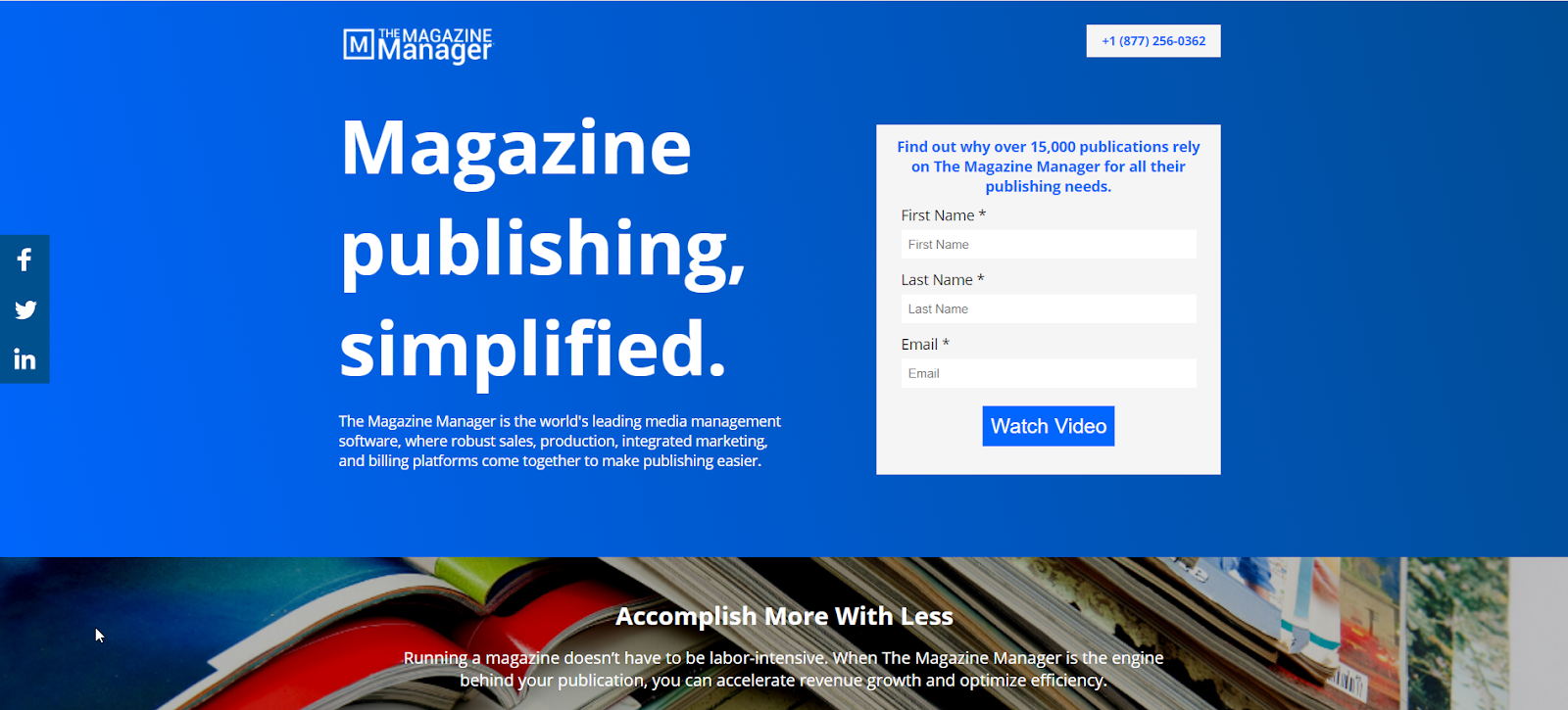In order to create a successful email marketing campaign, you first need a healthy email list full of valid email addresses. It’s important that your message is delivered to legitimate inboxes in order to increase engagement rate, decrease spam complaints and unsubscribes, and more.
Download Free White Paper Now: Everything You Need to Know About Email Marketing
A healthy email list helps you avoid any long-term consequences affecting your sender reputation, such as getting blacklisted by inbox providers or falling into phishing scams or honeypot traps. A clean email list with valid contacts ensures:
- Increased engagement with your content from both existing subscribers and your target audience
- Increased conversion rates, turning those audience members into customers
- Reduced risk of damaging your email marketing sender reputation
‘Tis the season for making a list and checking it twice, so to ensure you know how to tell if an email address is valid as well as how to avoid invalid email addresses, Mirabel’s Marketing Manager will discuss the difference between invalid and valid email addresses. We’ll also list email verification tools that you can use to grow a healthy email list for future marketing campaigns.
The Difference Between Invalid and Valid Email Addresses
Valid email addresses belong to an active recipient who is consistently engaging with your content, adding value to your marketing campaigns. A valid email address holds the correct format and belongs to an email domain.
Invalid email addresses belong to inactive recipients who don’t engage with your content. The unengaged email addresses can be invalid for a few reasons:
- Invalid emails can have typos or misformatting that do not lead to a legitimate inbox. This is common when would-be subscribers make accidental spelling errors when entering an email address on a form too quickly.
- An email can become invalid if the user changes their email, leaving the previous email without a user. Inactivity or lack of engagement is the main reason why emails turn invalid. A person may switch inbox providers, or create a new email address within the same provider, leaving the previous email dormant.
- When an inbox provider falls out of business, like Earthlink, or a server is permanently down, all email domains under that provider become “dead.” The emails associated with this defunct domain are also invalid.
According to VerifyBee, in the average mailing list, “about 5 to 30 percent of emails will be invalid.” Because an email list is ever-evolving with new email addresses, the opposite is true as well. Over time, email lists decay, and old email addresses become invalid. This consistent deterioration is when an email list is most vulnerable to holding invalid or unknown email addresses.
What Do a Valid and Invalid Email Address Look Like?
Every valid email address has three crucial components ensuring validity. Courtesy of VerifyBee, this is an example of a valid email address in three parts:
example-email@testServer.com
- Example-email: This is the local part of the email. It’s also the unique name each email address has within a given email domain’s server.
- testServer: This is the domain name that the address belongs to.
- .com: This is the domain identifier that “identifies what kind of domain it is that hosts the recipient server.”
In short, the local address in VerifyBee’s example is, “example-email.” It belongs to the domain “testServer,” and “.com” is the domain identifier. It’s important to understand that every valid email must contain an “@” symbol before the domain.
An invalid email address will likely have spelling or formatting errors in the local part of the email or a “dead” domain name.
Why Email Verification is Important
Email verification assists in cleaning or “scrubbing” email lists in order to increase email deliverability and engagement rates. Verification is the process of identifying valid, invalid, and unknown email addresses.
A variety of digital email verification tools, including Mirabel Technologies’ Clean Your Lists tool, automatically check that an email address is valid. It does so through a series of checkpoints, including accounting for a valid local address, live domain, “@” symbol, and proper domain identifier.
If you’d rather use a more traditional email verification strategy, there are additional ways to find out if an email is valid:
- Send a test email to the address. If you encounter an invalid or unknown email address, you will receive a notice such as “Message not Delivered” or “Address Not Found,” depending on the inbox provider and/or email delivery tool.
- Look up the email’s IP Address. Locate an email’s IP address by viewing an email address’ source, under “Received From.” Once you identify the IP address, search for its geolocation and determine if it is from a legitimate source.
Email verification tools, like Clean Your Lists, offer important features to perform bulk email list cleaning and timely validation. Through verifying email addresses, email verification tools help scrub lists, keep your sender reputation high, and increase email deliverability up to 99 percent.
When to Clean Your Email List
Cleaning email lists and scrubbing for invalid email addresses isn’t a recurrent activity. It’s often dependent on the size of your lists, how frequently you send email communications, and other factors. Smaller email lists with fewer contacts do not require the rigorous cleaning that a larger list may benefit from, according to SendGrid. They recommend the average email list should be cleaned approximately “every six months” for most email programs.
Mailtrap offers a few other recommendations for email scrubbing frequency:
- When new recipients are added
- If it’s been more than one month since the last validation
- If your hard bounce rate approached or exceeded 2 percent
- If you have low open rates
In addition to email verification tools to find invalid emails, cleaning your email list can also include identifying valid, engaged email addresses with these go-to strategies:
- Organize your email list by why each address subscribed to your content. This is how you can determine if your emails are relevant to your subscribers. If your email communications are irrelevant or out-of-date, it can lower open and click-through rates, hurting your overall engagement rate.
- Segment contacts by engagement. If you find an email falls under graymail, check if the email is valid. If not, place the address on the opt-out or unsubscribe list.
- Establish a sunset policy. The goal of a sunset policy is to regularly identify disengaged contacts and either remove them from your email lists or re-engage them.
According to HubSpot, “A spam complaint rate of 0.1% on a single email is a red flag that will increase your chances of bouncing or landing in the spam folder.” Any consistent disinterest in your contact list should be monitored as a risk to your sender reputation but can be successfully mitigated by cleaning your contact list.
What to Do with Invalid Email Addresses
So, what should you do with invalid email addresses? If an email address is simply unengaged but valid, you can utilize a few re-engagement email strategies. You can send a reintroduction email or, if your CRM is up-to-date, engage with the recipient on another platform.
However, if an email address is invalid, you need to archive or delete the invalid email. You should also add the invalid email to an opt-out or unsubscribe list. This prevents you from accidentally sending a campaign to the invalid email address.
A common example is if you send an email to someone who is no longer at a company. Most companies won’t let you know about a change in staff. However, if the email is linked to a person that no longer works at the company, their emails are usually auto-forwarded to a new contact.
If the new contact sends you their valid email address, update your CRM with the new address and archive or delete the old, invalid email. You should also add the old email to an opt-out or unsubscribe list.
How to Capture Valid Email Addresses
Understanding the difference between valid and invalid email addresses is important, but how do you capture valid addresses? How do you avoid invaild emails?
Never buy or borrow email lists, as they’re often riddled with invalid addresses and spam traps for a quick buck. Even valid emails on these third-party lists will likely mark your emails as spam, because it’s irrelevant, unexpected content. Opt-in email marketing strategies are the best way to ensure you capture valid, engaged email addresses:
- Include a pop-up or top bar to sign up for offers and newsletter on the home page. The pop-up should appear within seconds of a visitor arriving on the website and include an exit button.
- Place a subtle form-fill across your website, including in the header, footer, navigation, or within body copy.
- Use gated content marketing. If you built a content marketing offer, gate it with a landing page. Proper landing page design offers a lead-capture form, where a website visitor can put their information and opt into email communications.
- Add a form to your company’s Facebook. According to Aweber, “Simply integrate your email software with Facebook, so that anyone visiting your page on the social networking site can easily subscribe to receive email updates.” You can also run paid social advertising with the goal to increase lead generation through email collection.
- Exchange business cards with colleagues and industry leaders at networking events, and add them to your CRM.
- Use a registration or sign-up list at your booth during events or trade shows.
- Invest in a text-to-join email program. This service is offered by a few major inbox providers, or sign up with several third-party providers like Join By Text, Call Loop, and TXTImpact.
- Ask to send a receipt by email address instead of printing one.

Conclusion
Valid and invalid email addresses can literally make and break your email campaigns. Utilize email marketing strategies like learning the difference between an invalid and valid address, using email verification tools, and developing a healthy contact list. This healthy opt-in email list is a large part of developing a strong sender reputation, reliable email deliverability, and high engagement rates with your target audience.
For more information about how to improve your email deliverability, download A Beginner’s Guide to Email Marketing by Mirabel’s Marketing Manager:
SEE FOR YOURSELF
Watch an overview to learn how B2B marketing automation by Mirabel Technologies can help you increase traffic, optimize your funnel, drive more leads, improve conversions, and boost ROI — at a price you can afford!





